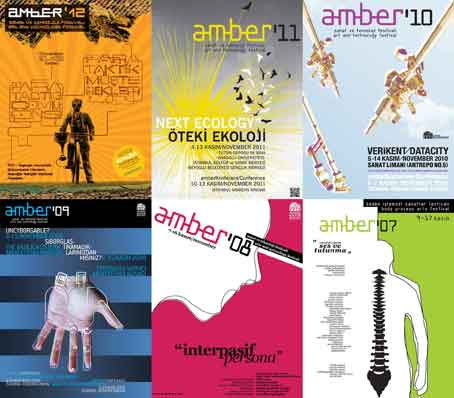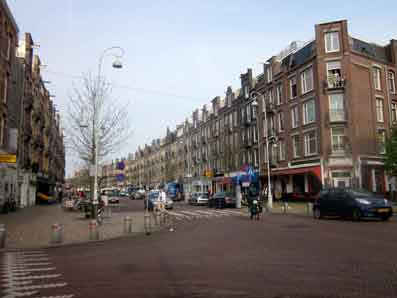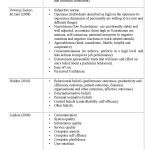Jussi Parikka – Media Archaeology
Jussi Parrika is the director of the Cultures of the Digital Economy (CoDE) institute. His lecture Practicing Media Archaeology: Creative Methodologies for Remediation and Creation focuses on some ideas and examples from media archaeological art practice.
By visiting projects by prominent artists from Zoe Beloff to Paul Demarinis, as well as some more recent names, he aims to elaborate some ideas of how such media archaeological art is able to address questions of the “material”, temporality and nature. As such, the projects are themselves excellent articulations of some of the challenges media archaeology faces in terms of developing itself as an innovative approach to digital culture – practically and theoretically.
From: http://medea.mah.se/2011/05/jussi-parikka-on-media-archaeology/
Brief History Of New Media Art In Turkey
 The new media scene in Turkey can be viewed parallel to the establishment of Visual Communication Design (VCD) departments at universities, which goes back to the end of the 1990s. In 1996 private universities founded earliest VCD departments. Yıldız Technical University is the first state university that started such a program, as well as the first master and doctoral degree program in the field. A pioneer in this field, Bilgi University’s VCD department started organizing annual student work exhibits in 2001. These exhibits created a broader awareness of digital technologies. The opening of VCD departments in public and private universities has led to an increased interest in screen based digital media in the last decade. At present there are roughly 170 universities in Turkey, about 45 of them in İstanbul and many of them have a VCD or similar program.
The new media scene in Turkey can be viewed parallel to the establishment of Visual Communication Design (VCD) departments at universities, which goes back to the end of the 1990s. In 1996 private universities founded earliest VCD departments. Yıldız Technical University is the first state university that started such a program, as well as the first master and doctoral degree program in the field. A pioneer in this field, Bilgi University’s VCD department started organizing annual student work exhibits in 2001. These exhibits created a broader awareness of digital technologies. The opening of VCD departments in public and private universities has led to an increased interest in screen based digital media in the last decade. At present there are roughly 170 universities in Turkey, about 45 of them in İstanbul and many of them have a VCD or similar program.
There is not (yet) a department or program solely dedicated to new media in any art faculty of any Turkish university. For the most part, art education still follows a conventional art educational practice, although there seems to be a gradual shift towards conceptual artworks created with different media – even within more conservative institutions such as the Faculty of Fine Arts at Mimar Sinan and Marmara University.
Screen-based interaction has been in the curriculums of all programs from the beginning. But the first course to go beyond screen-based interaction and towards spatial and tangible interfaces in terms of design and art, was offered only recently in 2005 at Bilgi University – and it was actually by me. (I still continue to teach this course at Sabancı University). In 2005, Elif Ayiter and Selim Balcısoy started a multi-disciplinary course at Sabancı University. This course focused on the collaborative work of design and engineering students. Koray Tahiroğlu, a musician who was educated abroad, started similar courses in the Music Department at Bilgi University. In 2008 the students presented their interactive compositions in a club. This was the first event of its kind in Turkey. Read more
Amber ’10 Art and Technology Festival, Istanbul, Turkey
dancetechtv
WORLDGRIDLAB production team
Asli Yilmazturk
Budget Monitoring And Citizen Participation In The Netherlands
My name is Noureddine and I am a member of the training group that deals with budget monitoring. We have examined the prospects paper for 2013. On page 26 of the bill it is stated that in 2013 there will be 197 million euros in expenses. We’ve got an overview of the financial statements of 2011, which states that the district spent 243 million euros in 2011. Are we correct in understanding that over the next three years, spending will be cut by 46 million euro? In 2016, the expenditure is budgeted at 179 million. Meaning a 64 million difference. Was that the intention?
The expenditure in the social domain in 2011 was 68.7 million euros. If you look at the budget in the perspectives note, you end up with a total of 59 million for the social domain (counted are: work, income and economy, education and youth, welfare and care, sports and recreation, culture and monuments). This means that the social issues will receive almost 10 million euros less in the next 3 years.
Introduction
Thus spoke Noureddine Oulad el Hadj Sallam, one of the participants in the experiment Budget monitoring in the Indische Buurt (Indische Neighborhood) in Amsterdam during the meeting of the Council Committee Social of the municipality of Amsterdam (city district east) in June 2012. His speech addressed the content of the municipality’s perspective paper for 2013.
Noureddine’s speech signifies a unique moment in the Netherlands. Not only because a citizen without a financial educational background commented on the expenditure of the budget made by a governmental organization. But also because it led to a change in the way the local government determines the priorities of the prospective budget for 2014; namely, in co-creation with citizens. Co-creation entails collaborative decision-making concerning the allocation of the budget by citizens and civil servants. It is an important contribution to the enhancement of civil society within the Netherlands.
This paper describes the methodology of budgetmonitoring and its operationalization via the project in the Indische Neighborhood. The 12-month pilot project was realized by The Centre for Budget Monitoring and Citizen Participation, in collaboration with E-motive, University of Applied Science in Amsterdam (HvA), MOVISIE and members of local communities in the neighborhood. Read more
From The Web – Transparency International
![]() One global movement sharing one vision: a world in which government, business, civil society and the daily lives of people are free of corruption.
One global movement sharing one vision: a world in which government, business, civil society and the daily lives of people are free of corruption.
In 1993, a few individuals decided to take a stance against corruption and created Transparency International. Now present in more than 100 countries, the movement works relentlessly to stir the world’s collective conscience and bring about change. Much remains to be done to stop corruption, but much has also been achieved, including:
– the creation of international anti-corruption conventions
– the prosecution of corrupt leaders and seizures of their illicitly gained riches
– national elections won and lost on tackling corruption
– companies held accountable for their behaviour both at home and abroad.
GLOBAL REACH, LOCAL KNOWLEDGE
Through more than 100 national chapters worldwide and an international secretariat in Berlin, we work with partners in government, business and civil society to put effective measures in place to tackle corruption.
INDEPENDENT AND ACCOUNTABLE
We are politically non-partisan and place great importance on our independence. We alone determine our programmes and activities – no donor has any input into Transparency International’s policies. Our sources of funding are made transparent as is our spending.
Read more: http://www.transparency.org/
Lévi-Strauss – A Propos Tristes Tropiques
P.S. This is intended for non-profit commentary and educational purposes. No copyright infringement intended. Copyright Disclaimer Under Section 107 of the Copyright Act 1976, allowance is made for “fair use” for purposes such as criticism, comment, news reporting, teaching, scholarship, and research. Fair use is a use permitted by copyright statute that might otherwise be infringing. Non-profit, educational or personal use tips the balance in favor of fair use.



